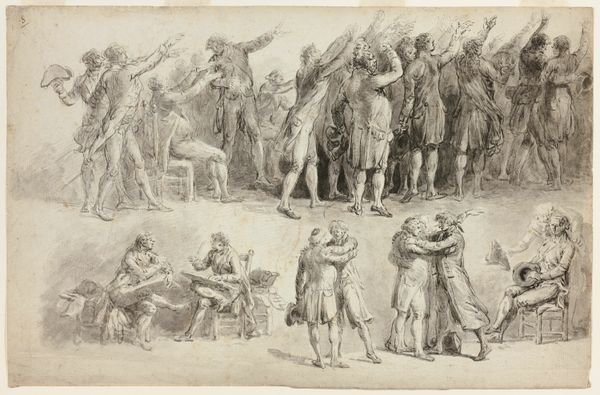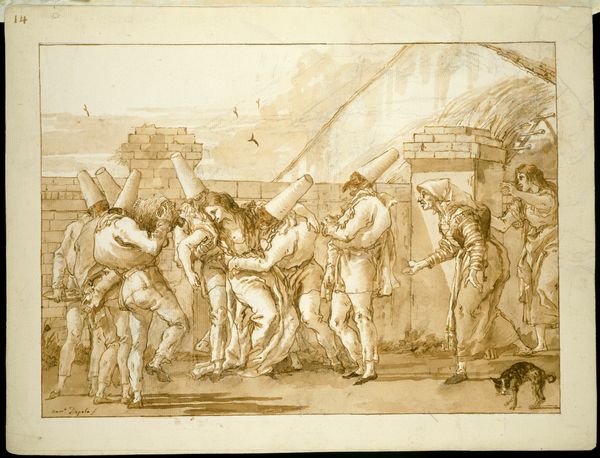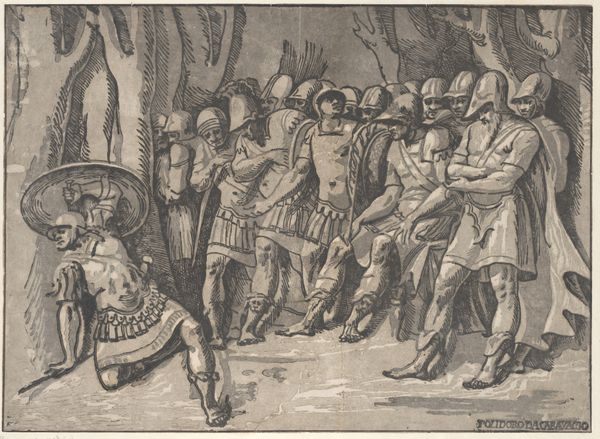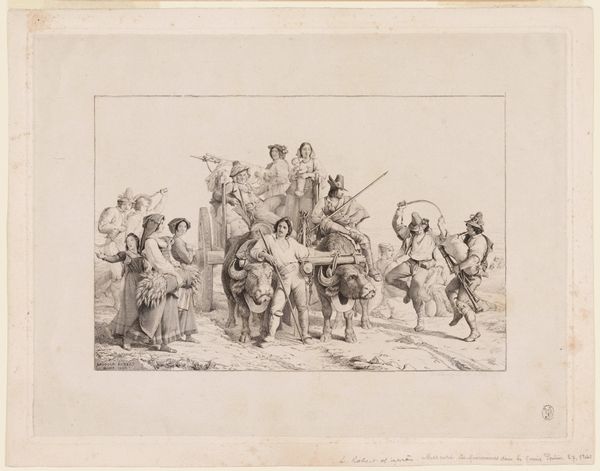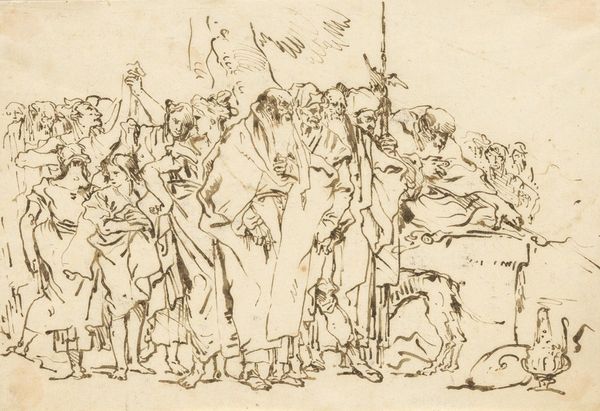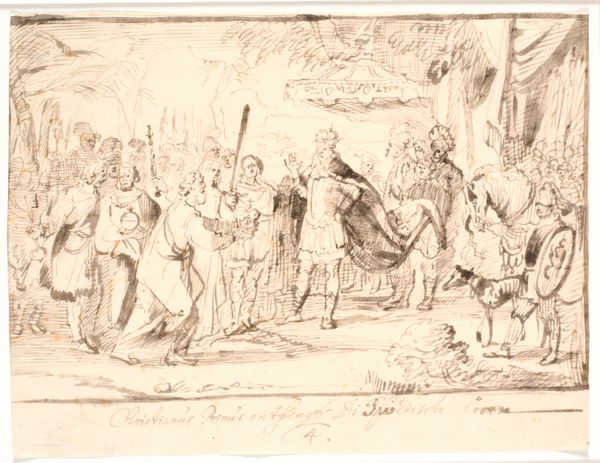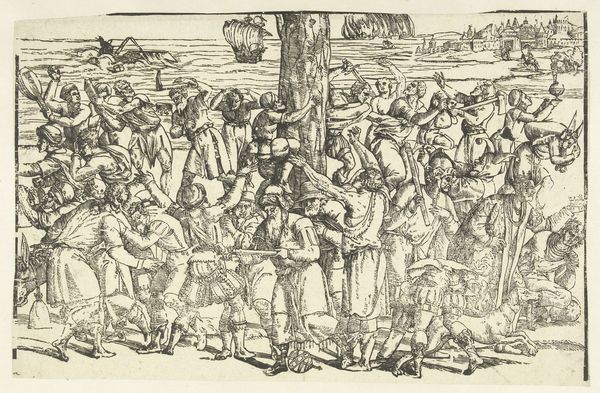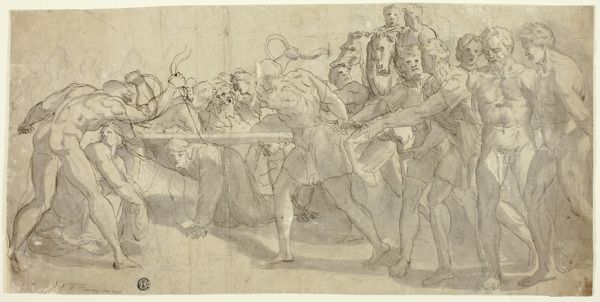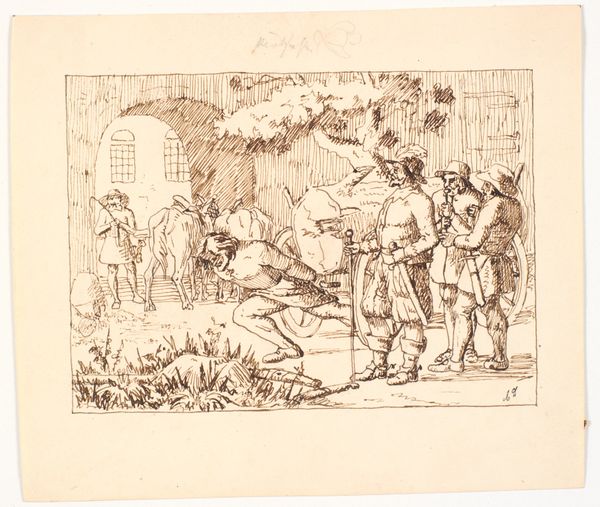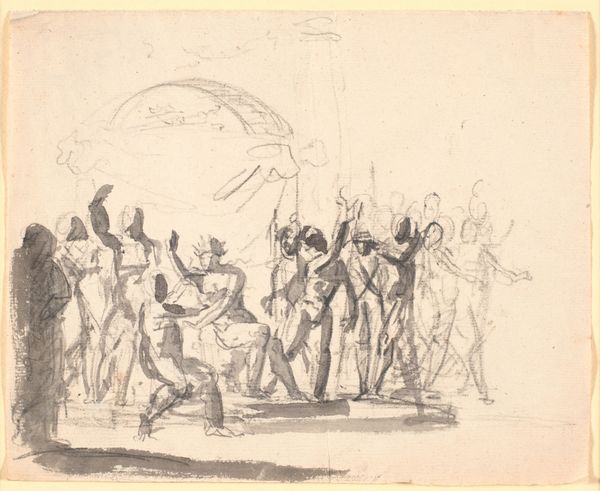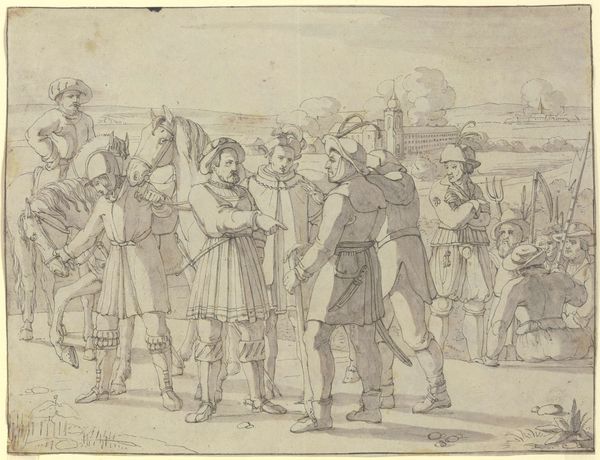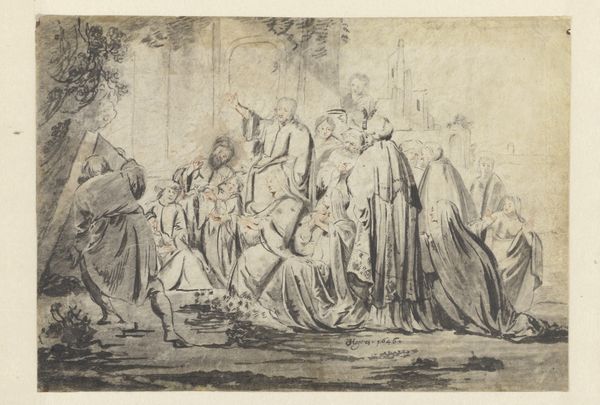
drawing, print, paper, chalk, pen, charcoal
#
drawing
# print
#
figuration
#
paper
#
11_renaissance
#
chalk
#
pen
#
genre-painting
#
charcoal
#
history-painting
Dimensions: 147 × 115 mm
Copyright: Public Domain
Editor: So, here we have Gerard Hoet’s "The Prodigal Son," a drawing of unknown date. The media involves pen, chalk and charcoal on paper and, in reproduction, as a print. There is a feeling of performance in this piece – all these onlookers seem posed, like they are on a stage. What story do you see unfolding here? Curator: Well, first, consider the narrative itself, rooted deeply in religious and social morals of the time. The return of the prodigal son wasn’t just a personal family affair, but a public spectacle and a reinforcement of societal values: repentance, forgiveness, and the restoration of order. What purpose did such visual representations serve beyond the purely devotional? Editor: Were they just reminders for people to behave? Curator: More than that, they were instruments of power, weren’t they? Think about the public display of wealth and the visual language of status – clothing, architecture, even the well-fed dogs. Hoet is, after all, showcasing the family's position and, implicitly, endorsing the social hierarchy. But there is some interesting conflict when looking at it from today's perspective. Does the composition somehow glorify excessive celebration while simultaneously teaching restraint? Editor: That’s true, it does seem like the image revels in opulence! All the fine clothing makes it seem like a happy occasion, not a reprimand. Curator: Exactly. And what does it say about the institution of family and the power dynamics within it? The father figure, the obedient son, the structure of inheritance…all these are reinforced visually. How does a museum displaying a work like this engage with this historical narrative? Does it perpetuate those values, or does it offer a critical lens? Editor: I see what you mean. The image isn't just the scene it depicts but it's the cultural ideas that go along with the depiction itself! It makes me wonder what the original patrons intended when they commissioned or purchased it. Curator: Precisely. Analyzing the layers of social and political context reveals so much more than the surface narrative. The conversation it generates extends into the present and asks a question on power, forgiveness and status in family constructs.
Comments
No comments
Be the first to comment and join the conversation on the ultimate creative platform.
